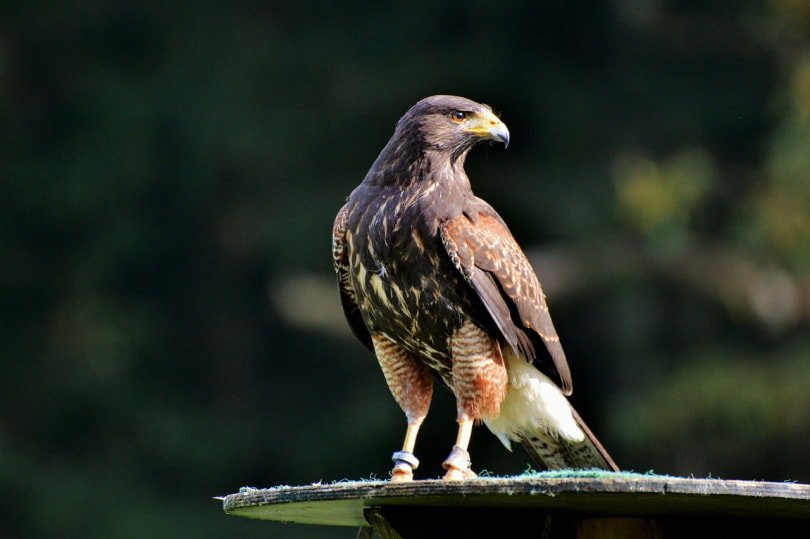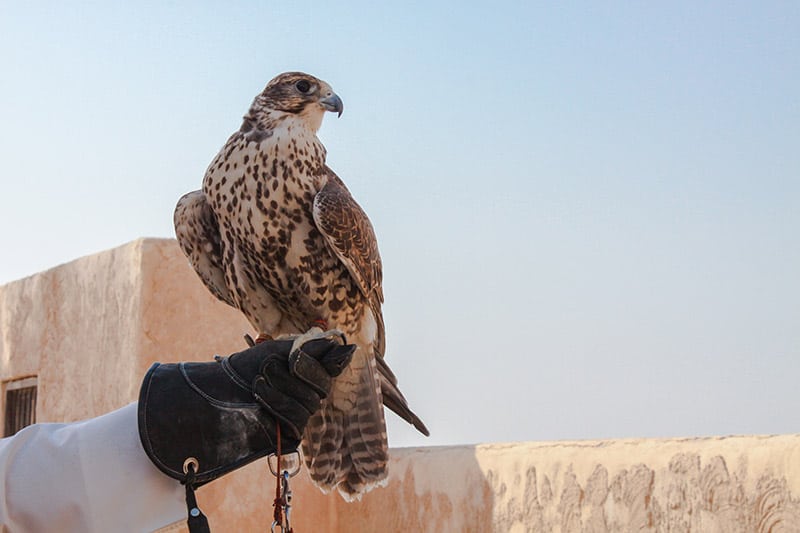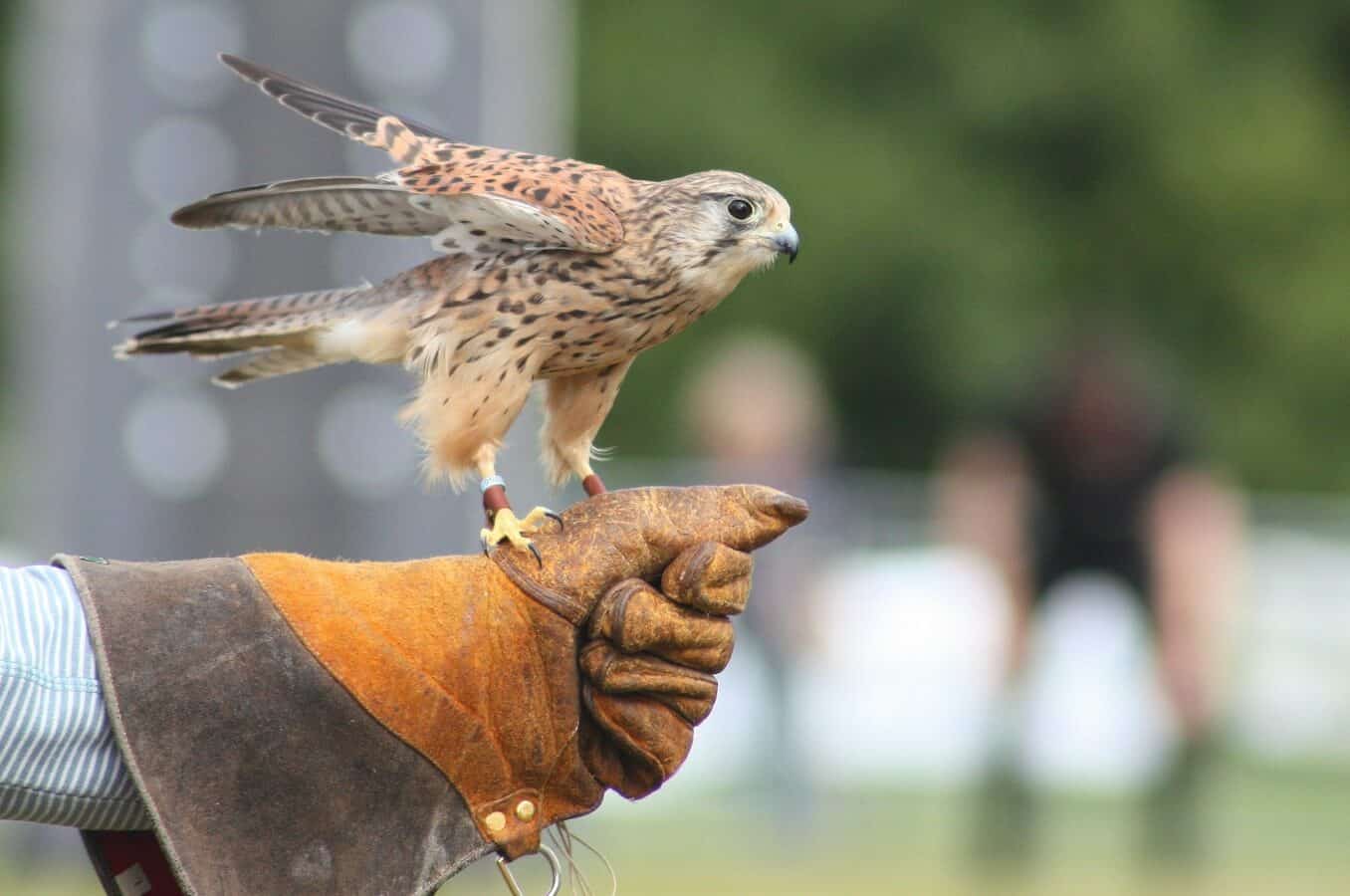Falconry is not just a hobby and is more than a sport; it is most aptly described as an art!
Falconry is an ancient art where a trained raptor will hunt wild prey in its natural state. This is a working relationship established between man and a bird of prey.
This craft has been practiced for thousands of years. The earliest archeological evidence of falconry dates back to Persia in 722–705 BC. During the excavation of the palace of Sargon II, the first depiction was found on an Assyrian bas-relief from the ruins at Khorsabads.
Falcons were originally used primarily as a means of getting food on the table. This is believed to be the second earliest form of hunting with the use of animals, the first was using the dog. In medieval times falconry became popular as the sport of kings and today it is practiced throughout the world. It is permitted in all the states of the U.S. except Hawaii.
Falcons and other raptors are magnificent, intelligent birds. They exhibit strength, great speed, and pinpoint accuracy for retrieving distant prey. There are a number of birds of prey that could possibly be used in falconry which falconer’s classify in three groups. These include the “broadwings” such as Golden Eagles, Buzzards, and the Harris Hawk; “longwings” like Peregrine Falcons, Lannar Falcon and Gyrfalcon; and “shortwings” which are Accipiters, or Goshawks.
The journey of a falconer starts with a fascination of these birds and a desire to learn more, but it soon escalates into a dedicated passion.
Falconers are very committed to their craft. To become a falconer requires long hours and a constant devotion.
Falconers develop finesse, subtlety and skill in working with birds of prey. Correspondence about falconry with Master Falconer John Wilkes of Texas, demonstrates that the rewards of this craft are extremely satisfying.

The passion of falconry
Keeping a bird as a pet is a wonderful experience in and of itself, but Falconry takes it to a whole new level. Pet birds are such awesome creatures that inspire great feelings of love and devotion. Experiencing such emotions is a very familiar part of our human experience, yet this is basically a self centered act. Emotions belong exclusively with the person who is experiencing them, to the “self.”
With parrots and other bird companions we can pour out our love and emotions. Pet birds enjoy being the focus of our affectionate displays and accept us as their flock. Birds of prey however, are not the same as pet birds. As primarily solitary creatures in a working relationship, they afford a perception beyond that of emotion. For the Falconer there is a sense of connection with the very essence of the animals being.
As a Master Falconer, John Wilkes describes the profound nature of the falconry experience. “Being a falconer is the art of understanding;” the birds “…are truly amazing creatures. Unlike parrots or other birds, raptors are very reptile-like. They are very simple creatures. Their behaviors are (basically) composed of the pursuit of three conditions; food, safety and procreation,” and “…each behavior is VERY complex.”
“I wish I could convey to you the feeling of sitting in a chair with a falcon, hawk, owl, or eagle on your glove for hours at a time, watching their behavior from inches instead of hundreds of feet. The thrill of calling your hawk to the glove, see it fly straight at you and then, at the last second, flare up and land like a feather on the glove. This is an experience that stays with you the rest of your life and I will never tire of it.”

Lessons learned from falconry
Wilkes has spent many years as a falconer, obtaining the mastery level in 2007. Through his experiences he shares some of what he’s learned. “Even though humans pursue the same conditions (food, safety and procreation), the mental process is very different from humans. Learning to leverage those behaviors is what allows a falconer to establish a relationship and rapport with a raptor.”
“When I hunt my bird, I release it and the bird is completely free. It stays with me, follows me and returns to the glove of its own free will. It can decide to leave at any time. It doesn’t because evolution has taught them to follow courses that provide the best chance of survival. In the wild, the greatest cause of death is starvation. The bird knows that while it is with me it will eat every day, even if the hunt is not successful.”
“In addition, raptors have taught me a great deal about the realities of nature. They taught me how difficult, callous and dangerous life is when you are not a human. They continue to teach me lessons about things I never would have known existed or how my perceptions of certain concepts are completely wrong.”

Beginning the journey of falconry
Falconry is a thrilling journey, but one that demands passion and dedication. Exploring the falconer’s experience in depth with tips on how to start on your own journey are discussed in “Falconry, Part 2: Becoming a Falconer Apprentice to Master.” In this follow-up interview with John Wilkes he’ll talk about what first inspired him to become a falconer and his trials and joys along the way to ultimately becoming a Master Falconer!
Clarice Brough is a team member at Animal-World and has contributed many articles and write-ups.
Featured Image Credit: David White, Unsplash
